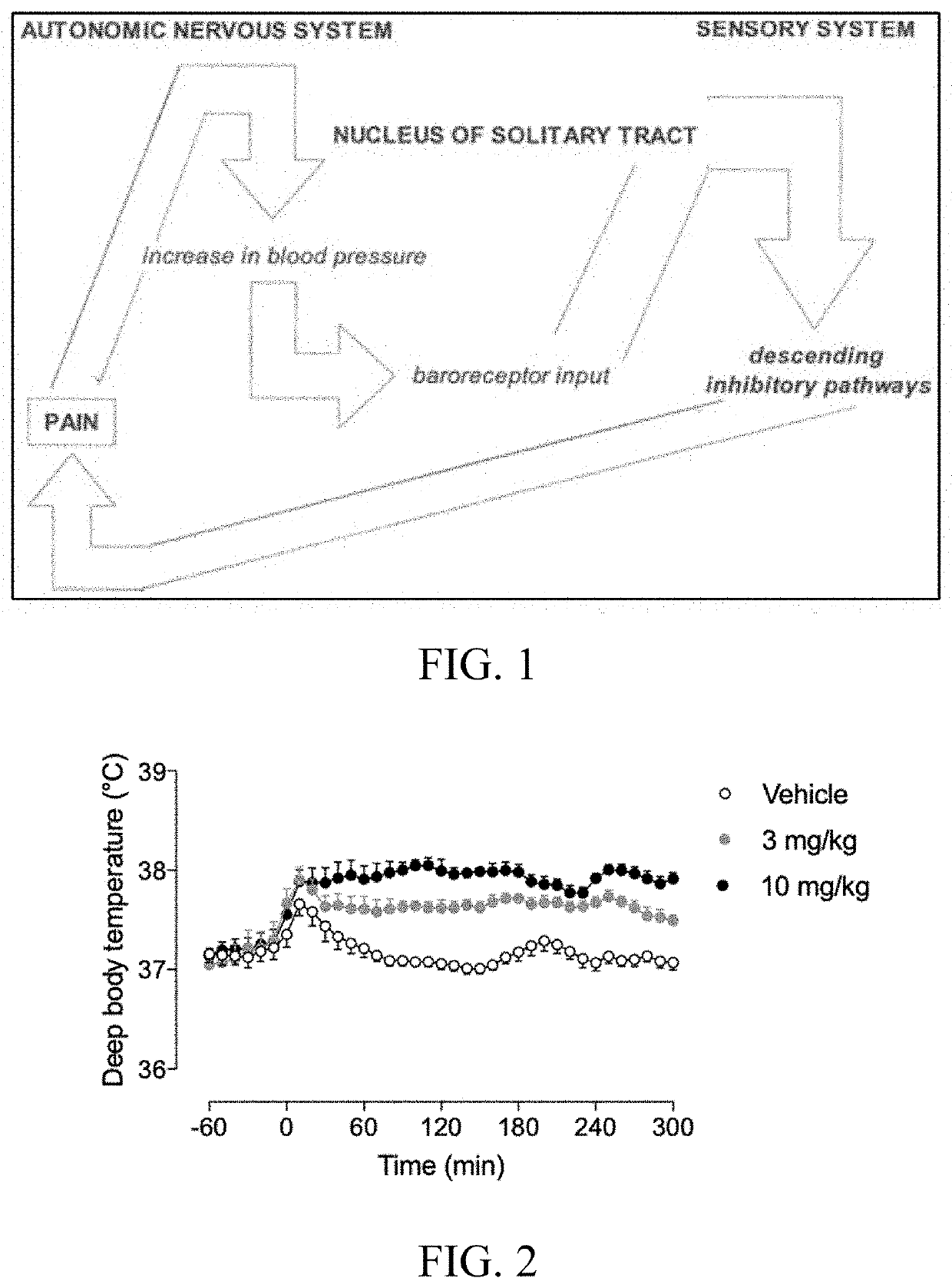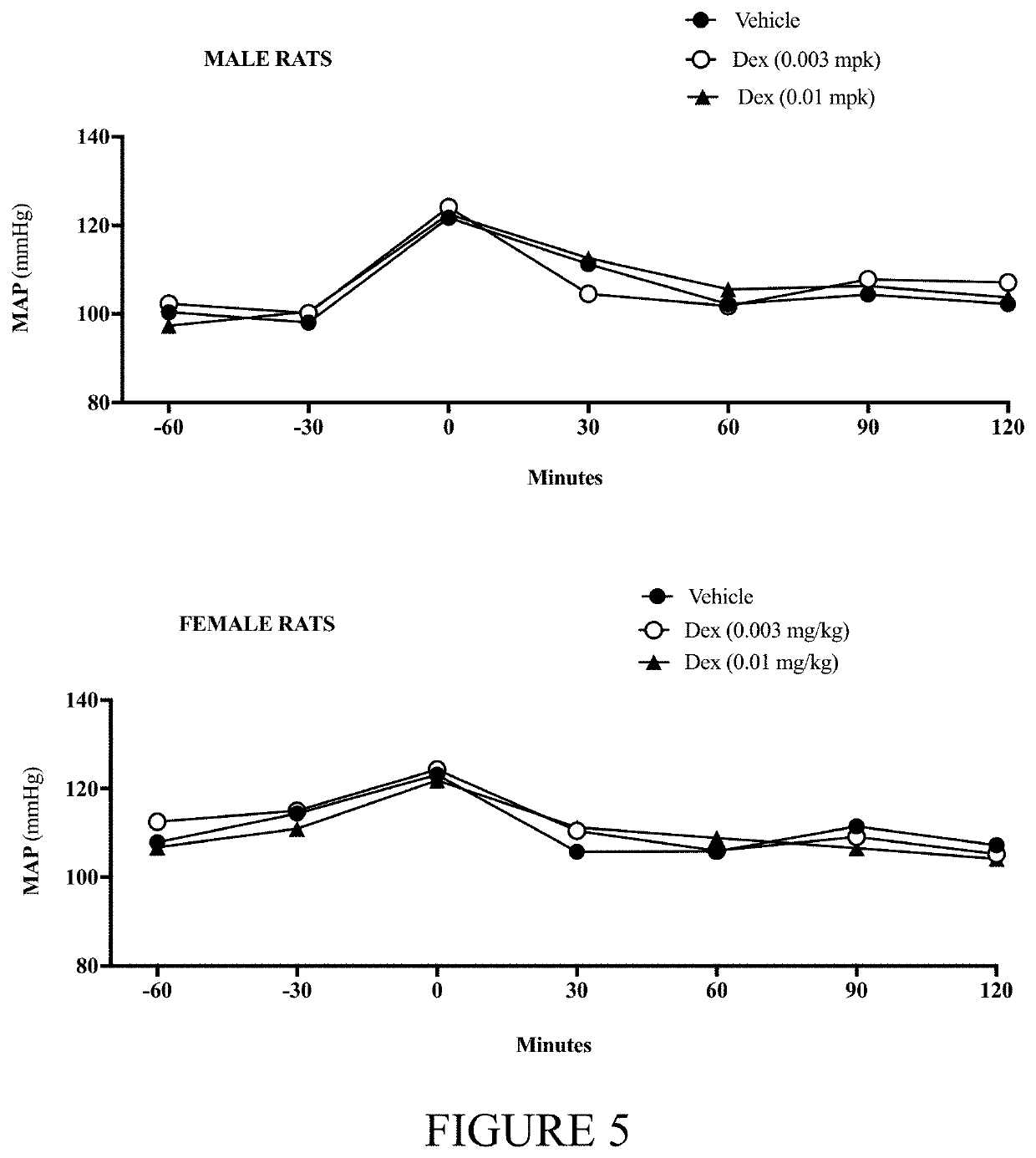Compositions and methods for treatment of pain
a technology for pain and compositions, applied in the field of compositions and methods for pain treatment, can solve the problems of narrow safety window, high abuse potential, and inability to achieve safe and effective treatment of pain, and achieve the effect of avoiding known adverse effects and beneficial properties
- Summary
- Abstract
- Description
- Claims
- Application Information
AI Technical Summary
Benefits of technology
Problems solved by technology
Method used
Image
Examples
example 1
[0151] EFFECTS OF THE COMPOUND OF FORMULA (I) ON HYPERTHERMIA INDUCED BY THE COMPOUND OF FORMULA (II): Radio-telemetry methods are commonly used to study physiological functions related to regulation of body temperature and blood pressure. In laboratory rats, radio-telemetry probes can be used repeatedly for simultaneous recording of body temperature and blood pressure. As the compounds of Formula (I) and Formula (II), when given alone, produce hypotension (Delaunois, A. et al. J. Pharmacol. Toxicol. Meth., 2009, 60, 117) and hyperthermia (Honore, P. et al., Pain, 2009, 142, 27), respectively, radio-telemetry methods are applied to study body temperature and blood pressure effects of combinations of compounds of Formula (I) and Formula (II).
[0152]Adult male and female Sprague-Dawley are implanted with radio-telemetry transmitters for monitoring blood pressure and core body temperature. Radio-telemetry transmitter (DSI HD-S10) implantation is performed under sterile condition. Long-a...
example 2
[0158] ANTI-HYPERALGESIC AND ANTI-ALLODYNIC EFFECTS OF A COMBINATION OF THE COMPOUNDS OF FORMULA (I) AND FORMULA (II): Chronic constriction injury (CCI) models are commonly used to study neuropathic pain and to support discovery and development of novel therapeutics (Medvedev, I. O. et al., Neuropharmacology, 2004, 47, 175). Hyperalgesia and / or allodynia induced by CCI in laboratory rodents are sensitive to treatments aimed at α2-adrenoceptors (Murai, N. et al., Pharmacol. Biochem. Behav., 2016, 141, 10; Vissers, K. et al., Pain Practice, 2003, 3, 298) or TRPV1 receptors (Guo, S. H. et al., Sci. Rep., 2019, 9, 2769; Labuz, D. et al., Neuropharmacology, 2016, 101, 330). CCI models are used to reveal synergistic interactions of analgesic, anti-hyperalgesic and anti-allodynic, agents of different pharmacological classes. Lack of synergistic or supra-additive interactions is revealed using the CCI model for a combination of α2-adrenoceptor agonist with NMDA receptor channel blockers (Ma...
PUM
| Property | Measurement | Unit |
|---|---|---|
| Time | aaaaa | aaaaa |
Abstract
Description
Claims
Application Information
 Login to View More
Login to View More - R&D
- Intellectual Property
- Life Sciences
- Materials
- Tech Scout
- Unparalleled Data Quality
- Higher Quality Content
- 60% Fewer Hallucinations
Browse by: Latest US Patents, China's latest patents, Technical Efficacy Thesaurus, Application Domain, Technology Topic, Popular Technical Reports.
© 2025 PatSnap. All rights reserved.Legal|Privacy policy|Modern Slavery Act Transparency Statement|Sitemap|About US| Contact US: help@patsnap.com



